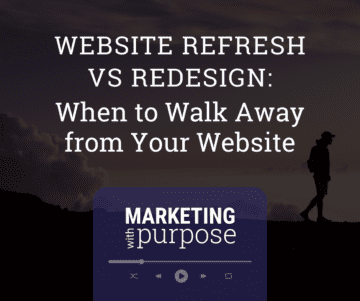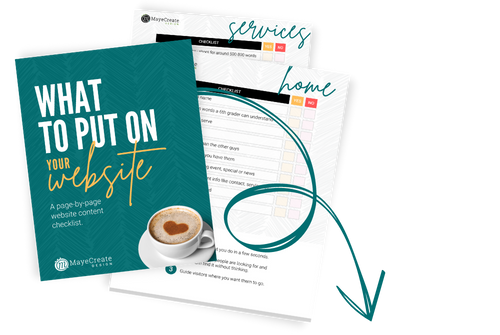5 Key Insights from our Construction Website Benchmark Report
September 12, 2017
CONSUME CREATIVELY
This content is available in:
This content is available in:
TEXT
 The goal with our recent construction website benchmark report was to give construction companies a frame of reference when tracking the successes (and failures) of their respective websites. The thing is packed full of data and can serve as a great resource for understanding what your construction website metrics are and how they compare to other websites in the industry.
The goal with our recent construction website benchmark report was to give construction companies a frame of reference when tracking the successes (and failures) of their respective websites. The thing is packed full of data and can serve as a great resource for understanding what your construction website metrics are and how they compare to other websites in the industry.
It’s not always easy though to see what the numbers mean in relation to the quality of your website. From our data we gathered a few insightful conclusions about the way these metrics might influence you to change or update your site. Five to be exact. Hence the name of this post…
Hopefully you’ll find our takeaways useful when you’re breaking down your data and planning a course of action to improve your construction website.
1. Your construction website needs a regularly updated Projects section.
There’s power in purpose.
The Projects section adds purpose to your website: it not only showcases your abilities in the construction industry, it creates an opportunity for visitors to spend more time on your site to learn about the work you do.
About 17% of construction website visitors view some type of Portfolio page at least once during their time on your site. Say you get 1,500 visitors to your site in a month. Around 255 of those visitors will hit up one of your Projects pages. That’s 255 additional opportunities to connect with your audience you wouldn’t have otherwise had without a Projects section on your construction website.
There’s power in numbers.
The Projects section is the second most entered part of construction websites. On average, each project page brings in a handful of website visitors each month, which means a regularly updated portfolio will invite a steady amount of traffic to your site. Even if it’s only a few visitors a month, those visitors add up and continually grow as you add projects to your portfolio.
This makes sense when you compare a Portfolio section to how a blog works on a website. Add a project to your portfolio is like adding a page on your website, just like a new blog post on your blog. And of course, each page on your site is a way visitors can get in.
Think of your website as a hotel and each page a hotel room. If you build a hotel with 10 rooms, it will only ever hold enough people to fill those 10 rooms. If you build a hotel with 100 rooms, you’ll be able to fit a lot more people, right? What about 1,000 rooms? How many will your hotel hold then? (Hint: a lot more). What’s nice is once the rooms are built, they’re there forever for people to use (or until the hotel is demolished, which it shouldn’t be if you built it right). The even nicer thing is, your hotel in this scenario is virtual so you can continually add “rooms” to it by adding projects to your website’s portfolio. The more projects you add to your website portfolio, the more “rooms” in your “hotel” you’ll have to house more visitors.
2. Keep your Home page simple.
Visitors generally spend an average of 26 seconds on the Home page of construction websites. That’s shorter than the time spent on any other page in a construction company’s website.
My point? First impressions are important. Consider this when planning out your home page design and content. The idea is to get your visitors to go to other pages on your site to learn about you. So:
- Keep your words impactful and to the point.
- Use a layout that keeps visitors moving through your site.
- Feature relative, high-quality imagery that packs a punch.
3. Your layout and calls to action directly affect the amount of time people spend on your website.
While the metrics varied a bit among the construction websites we studied, people tended to stay longer on sites with more pages. Leading us to conclude yet again that content is king.
Generally speaking, though, the more well-designed pages and calls to action you have on your construction website the more time people spend on the site hopping from page to page. That said, even if you have thousands of pages if they’re hard to find or ugly people won’t stick around to look at them. If visitors are leaving your site quickly assess:
- How easy it is for visitors to access the additional pages on your site. Do you guide visitors to other pages by linking to related content or projects?
- How your calls to action are working to send visitors onto other pages on your site. Do visitors tend to flow from one page to another based on your suggestions? Google Analytics allows you to see this type of data on their Behavior Flow Report and also using their Page Analytics browser extension for Chrome.
- If your calls to action are well placed within your website to lead people to view other pages on your site. If you have already implemented calls to action but people don’t seem to use them, they may not be obvious enough or possibly not relevant. Try switching them up to keep visitors on your site longer.
4. A mobile-friendly construction website is a must-have.
Our construction website visitor research showed over 35% of traffic coming from mobile devices. It’s an undeniable trend: mobile traffic is on the rise. We review hundreds of websites every year, and each year mobile website traffic increases and will only continue to grow. BGR says in 2016, mobile devices accounted for over 43.6% of time spent on the Internet and projects that percentage will reach 50% by the end of this year.
Basically what I’m saying is by not having a mobile-friendly site, you’re currently ignoring over a third of your website visitors. If you don’t get one soon, you’ll be ignoring half by 2018. Google says 61% of Internet users aren’t likely to return to a mobile site they had trouble accessing, and 40% of those users end up going to a competitor’s website instead. So actually, you’re not just ignoring a significant portion of your website visitors, you’re hurting your company’s credibility and driving traffic to your competitors’ sites instead. Not ideal.
Simply put, you’ve got to have a mobile website.
5. Bounce rates are a useful metric, but they’re not the end-all, be-all.
It’s true that from a big picture perspective, your overall bounce rate can be helpful for determining the quality of the content and functionality on your site.
Based on the average bounce rate of 36% we found in our research, we can comfortably deduce that the websites we looked at had good content laid out well enough to keep visitors moving through the pages. Which is what we were going for when we designed and built them. After all, we don’t build crappy websites.
When striving to improve your website be aware, there are many factors weighing into why a bounce rate is what it is. Rather than using this metric to judge what your website is or isn’t, it’s better to use this information to understand the whys behind the behaviors of your website visitors. It’s not black and white, unfortunately. You’ll glean more knowledge and understanding when you examine the gray areas in between.
For instance, if you delve into your bounce rates by page, you may find your Contact page has a really high bounce rate. And that’s okay! Great, in fact! The visitors bouncing from this page are doing what you want them to do: they’re seeking out a way to contact you. It’s no surprise people searching for your contact information are finding and opening your contact page, getting what they need and then leaving.
There’s really no telling based on this one metric though why your Home page might have a high bounce rate. It may be because of the way it’s designed, how you’re marketing your website or what your specialty is. So again, use caution when drawing conclusions from your bounce rates and ask “Why is it?” instead of just “What is it?”
Just keep on trackin’.
The fact that you’ve even read this far tells me two things:
- You saw our Construction Website Benchmark Report, OR:
- You understand the importance of tracking your marketing efforts.
So first, let me congratulate you and say you’re awesome. You’re awesome for caring enough about your business’s online image to read the benchmark report, and you’re awesome for being smart enough to understand the importance of tracking all of the effort you put into making your website great.
If you need any further consulting on improving your website, we’re here to help.
Who Manifested This Madness?

This fabulous human, that's who.
Monica Maye Pitts
Monica is the creative force and founder of MayeCreate. She has a Bachelor of Science in Agriculture with an emphasis in Economics, Education and Plant Science from the University of Missouri. Monica possesses a rare combination of design savvy and technological know-how. Her clients know this quite well. Her passion for making friends and helping businesses grow gives her the skills she needs to make sure that each client, or friend, gets the attention and service he or she deserves.






